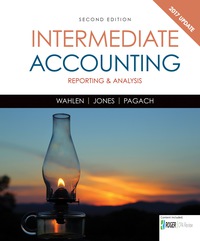Answered step by step
Verified Expert Solution
Question
1 Approved Answer
Yeti sells hard coolers for outdoor activities. The following is taken from the 2021 inventory records of YETIs product Tundra 65 Hard Cooler. # units
Yeti sells hard coolers for outdoor activities. The following is taken from the 2021 inventory records of YETIs product Tundra 65 Hard Cooler.
|
|
| # units | per unit |
| 1/1/2021 | Beginning inventory | 10,000 | $120 |
| 7-Jan | Purchases: | 5,000 | $110 |
| 25-Jan | Purchases: | 6,000 | $140 |
| 10-Feb | Sales: | 3,000 | $350 |
| 7-May | Purchases: | 6,000 | $180 |
| 29-Jun | Sales: | 5,000 | $350 |
| 7-Aug | Purchases: | 3,000 | $150 |
| 29-Aug | Sales: | 2,000 | $350 |
| 29-Sep | Sales: | 4,000 | $350 |
| 29-Oct | Purchases: | 5,000 | $170 |
| 12/31/2021 | Inventory on hand | 21,000 | ? |
- Assume that YETI is using the periodic inventory system and the average cost method. Determine the beginning balance of the inventory, total purchase, cost of goods sold, and the ending balance of the inventory. *Show separate calculations of cost of goods sold and the ending balance, and then later verify those answers by showing the relation [beginning balance + total purchase cost of goods sold = ending balance]
- Assume that YETI is using the periodic inventory system and the FIFO cost method. Determine the beginning balance of the inventory, total purchase, cost of goods sold, and the ending balance of the inventory. *Show separate calculations of cost of goods sold and the ending balance, and then later verify those answers by showing the relation [beginning balance + total purchase cost of goods sold = ending balance]
- Assume that YETI is using the periodic inventory system and the LIFO cost method. Determine the beginning balance of the inventory, total purchase, cost of goods sold, and the ending balance of the inventory. *Show separate calculations of cost of goods sold and the ending balance, and then later verify those answers by showing the relation [beginning balance + total purchase cost of goods sold = ending balance]
- Assume that YETI is using the perpetual inventory system and the average cost method. Determine the beginning balance of the inventory, total purchase, cost of goods sold, and the ending balance of the inventory. *Show separate calculations of cost of goods sold and the ending balance, and then later verify those answers by showing the relation [beginning balance + total purchase cost of goods sold = ending balance]
- Assume that YETI is using the perpetual inventory system and the FIFO cost method. Determine the beginning balance of the inventory, total purchase, cost of goods sold, and the ending balance of the inventory. *Show separate calculations of cost of goods sold and the ending balance, and then later verify those answers by showing the relation [beginning balance + total purchase cost of goods sold = ending balance]
- Assume that YETI is using the perpetual inventory system and the LIFO cost method. Determine the beginning balance of the inventory, total purchase, cost of goods sold, and the ending balance of the inventory. *Show separate calculations of cost of goods sold and the ending balance, and then later verify those answers by showing the relation [beginning balance + total purchase cost of goods sold = ending balance]
Step by Step Solution
There are 3 Steps involved in it
Step: 1

Get Instant Access to Expert-Tailored Solutions
See step-by-step solutions with expert insights and AI powered tools for academic success
Step: 2

Step: 3

Ace Your Homework with AI
Get the answers you need in no time with our AI-driven, step-by-step assistance
Get Started


